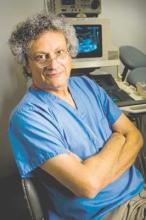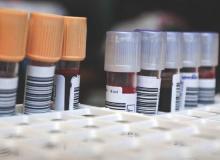ATLANTA – New advances in prenatal genetic testing are rapidly expanding the catalogue of known genetic anomalies, and the tools to detect them.
“At one time, not too long ago, we were naive enough to think that the x,y picture was enough,” Dr. Ronald J. Wapner said during a day-long seminar at the annual Pregnancy Meeting sponsored by the Society for Maternal-Fetal Medicine. “In 1979, we as a field made a decision to use karyotyping to screen for Down syndrome. Now almost half a century later, we are still screening for Down, but our technology has dramatically changed. Virtually all chromosomal aberrations can now be detected by prenatal testing.”
It’s not just the technology that’s expanding, though. An ever-increasing number of chromosomal and subchromosomal anomalies can now be detected with up to 100% accuracy. It’s true that not all of these are known to be clinically relevant, said Dr. Wapner of Columbia University, New York, and many of the genetic variances may have no clinical significance at all. But as testing and diagnosis mature, he anticipates uncovering new links between genetic findings and their physical and neurocognitive manifestation.
“As we learn, there will be things that we can identify that will matter,” he said. “And the time to find out about that is before the baby is born, when parents still have time to make important decisions about how to handle the pregnancy.”
New data suggest that copy number variants are much more common than once believed. For example, in prior general prenatal studies that looked at testing for advanced maternal age or maternal anxiety, the incidence of 22q11.2 deletion was about 1:800. But Dr. Wapner has reason to believe that microdeletions associated with neurocognitive problems may be much more common than is now assumed.
He conducted an analysis of one of his own studies, which compared microdeletion detection using both karyotyping and chromosomal microarray.
In this analysis, which is currently unpublished, he found that among children with neurocognitive delay or dysmorphic features, the 22q11.2 deletion microdeletion, which is strongly associated with schizophrenia, appeared to be much more common – 1:167. Similarly, a microdeletion in 16p11.2, associated with autism, that occurred at a rate of 1:976 in the prenatal studies, was closer to 1:241. There were similar findings for copy number variants associated with epilepsy, Prader-Willi, and Angelman syndrome.
Some striking numbers illustrate the expansion of both the ability to test and to understand the results. Dr. Wapner presented genetic analysis data on 3,822 patients tested from 2008 to 2014; these patients had a total of 165 copy number variants. In the initial period of 2008-2011, 2.5% of those were of unknown significance; 0.9% were known to be pathogenic, and 0.9.% were benign. Over the subsequent years, the numbers of variants categorized as pathogenic or benign didn’t change, but those of unknown significance did – and they did so rapidly.
In 2012, the percentage of variants of unknown significance dropped an entire point, to 1.5%. It decreased further in 2013 (1.2%), and again in 2014 (0.9%). The steady decline shows that geneticists just aren’t finding new things, but are understanding them as well.
Testing risks decline
Obtaining fetal genetic material by amniocentesis or chorionic villus sampling (CVS) is not without risk, although those risks are probably lower than previously believed.
A 2015 review examined outcomes in more than 51,000 women who underwent amniocentesis or CVS. There were 324 pregnancy losses in 42, 716 women who underwent amniocentesis and 207 losses in 8,899 women who underwent CVS. The risk of miscarriage prior to 24 weeks in women who underwent amniocentesis was 0.8%; it was 2.18% in the CVS group.
“We have all had procedures where a patient has lost the pregnancy,” Dr. Wapner said. “But the risk is lower than we even had thought. With amnio it’s about 1 in 1,000 and with chorionic villus sampling it’s about 1 in 500.”
Advances in blood-based sampling may someday obliterate any risk to the pregnancy. Dr. Wapner foresees a not-too-distant future when a simple maternal blood draw will make fetal genetic screening a viable option for every pregnancy, and not just reserved for the pregnancies of parents with known genetic risk factors.
Cell-free fetal DNA freely circulates in maternal blood and even now is being used to detect some of the more common aneuploidies, including trisomies 18 and 21, Dr. Mary E. Norton of the University of California, San Francisco, said during the seminar.



